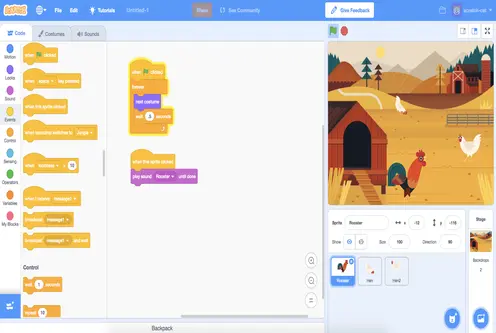No code tools like Scratch can be extremely beneficial for children learning to code. Scratch is a block-based programming language and environment developed by the MIT Media Lab. It is designed to be easy to use and understand for children, even those with no prior programming experience. The interface consists of a series of blocks that can be snapped together to create a program, making it easy for children to visualize the structure of their code and understand the logic behind it. This can help children to develop a strong foundation in basic programming concepts such as control flow, variables, and events.
Scratch also allows children to create interactive animations, games, and simulations. This can be a great way to engage children in the learning process and provide them with a sense of accomplishment. It also allows children to explore their creativity and develop their own ideas. Children can share their creations with others in the Scratch community, which can also help to foster collaboration and a sense of community.
Furthermore, using Scratch can also help children to develop problem-solving skills. As children work through the process of creating a program, they often encounter obstacles and bugs. By learning how to troubleshoot and debug their code, children can learn to think critically and logically, which can be useful skills in both the tech field and in other areas of life.
In summary, no-code tools such as Scratch are a great way to introduce children to the world of programming and computer science. They provide a user-friendly and visual interface that is easy for children to understand and use, which can help to develop basic programming concepts, problem-solving skills, creativity, and also foster a sense of community.
